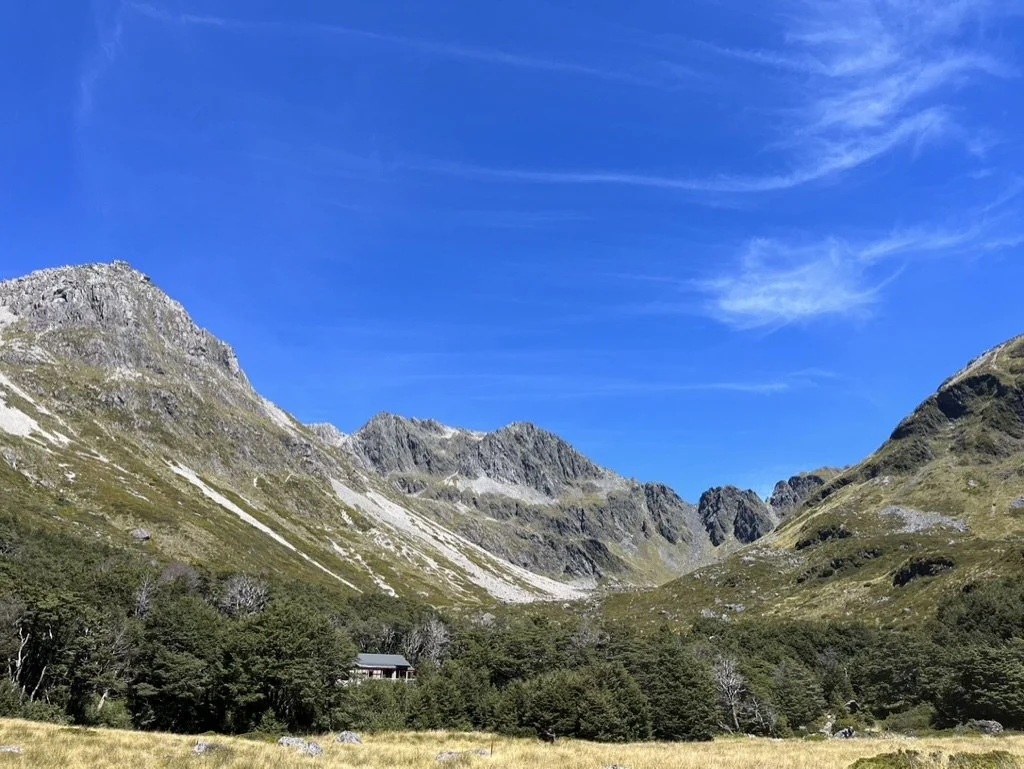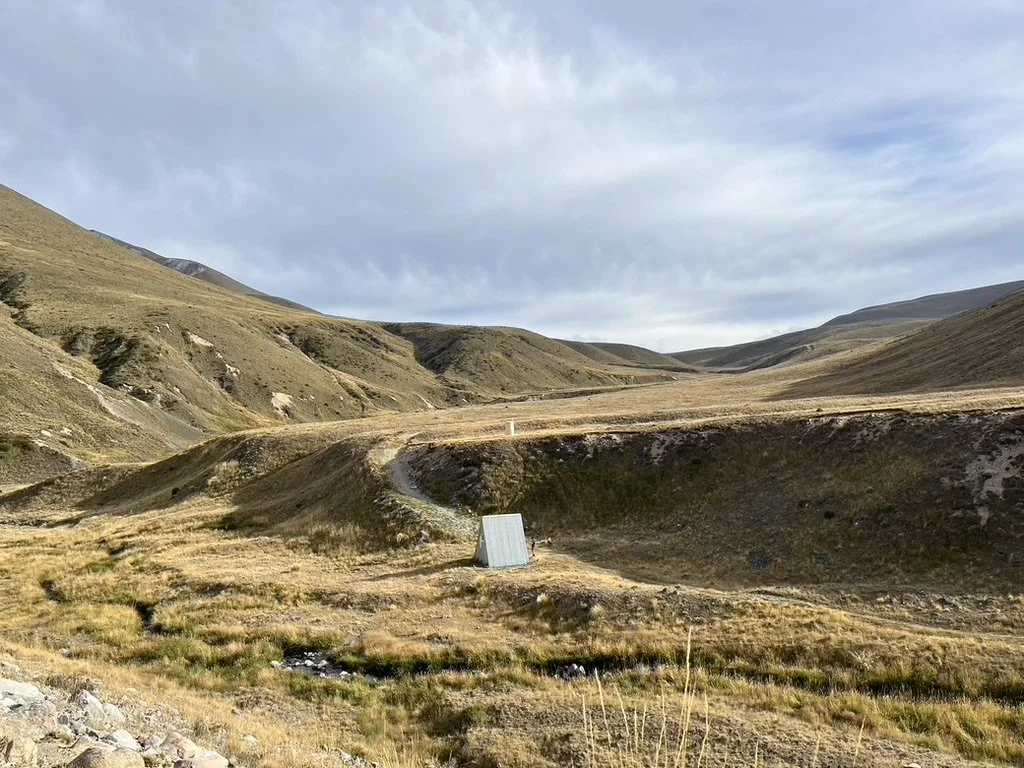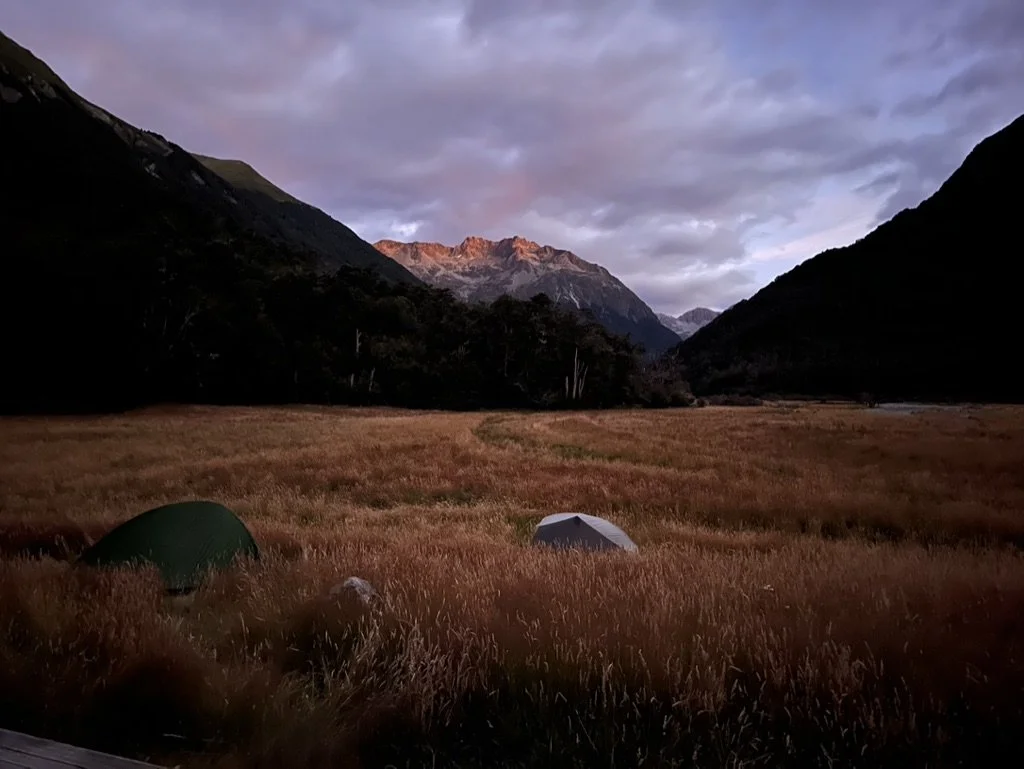How to Hut
New Zealand has this amazing thing called Backcountry Huts! Not every country does. We’ve just started creating something like that in Lithuania that I’m pretty proud of (if you’re ever in the neighbourhood, you can check it out here). Scotland and the Nordics have something similar, but New Zealand just takes it to a whole new level.
Some of the huts are in such beautiful locations it’s hard to believe you pay mere 10-25 NZD to stay in them!
I mean, look at these!
And these are just my pics. I didn’t want to infringe on any copyright rules, but you can google Liverpool hut, or Mueller Hut…see for yourself.
The huts come in especially handy on Te Araroa since it’s illegal to free camp wherever you want here.
Each country, though, has its own rules on how the huts are meant to be used, so I thought I’d run through some of the most common questions I had before starting TA (Te Araroa) and along the way.
Some General facts about the New Zealand DOC Huts
DOC (Department of Conservation) has about 950 of them across the country.
There are different types of huts. Here’s the short description:
Great Walks - those on the 11 Great Walks of NZ. Fanciest, often with water and gas supply, sometimes electricity even, can cost up to 80 NZD. Require a booking.
Individually Priced - huts in popular places, not necessarily fancy. Require a booking.
Serviced - also in popular places. Have water and fuel available, a warden nearby, cost 25-30 NZD and 10 NZD to camp. Require a booking.
Standard - simpler huts, no warden, water and toilets available, cost 10 NZD.
Basic/Bivvy - very basic facilities, some are just shelters, free stay.
Club Huts - those are owned by clubs and have own rules, not many of them on Te Araroa trail, you have to check their pages for details.
Huts work on a first come first serve basis. The place is not guaranteed unless it’s a bookable hut and you have a booking.
Bunks are also not booked specifically, so if there’s two of you coming, you get whatever bunk is free, even if they are in opposite corners of the hut. But you know, talk to people.
You can pay for the huts individually on arrival (they have cash boxes), online for some, buy hut tickets in visitor centres, or you can buy a Backcountry Hut Pass that allows access to most of them.
Toilets: I have not seen a hut without a long-drop nearby.
Heating: probably around 99% of huts don’t have electricity. Some have fireplaces, but I wouldn’t count on heating.
Water: a lot of them have a river or a lake nearby. Some have rainwater tanks. Just know that water is not inexhaustible in the tanks, so if it’s been hot for a long time, take extra water from a source before you reach the hut if you know the hut is not near a source of water.
Cooking: most don’t have cooking facilities. Bring your own or check the DOC page to see if a particular hut has gas.
To buy or not to buy a Backcountry Hut Pass?
This is a question I often see repeated. If you're looking for a one-word answer, then the answer is – YES. If you plan to hike the entire Te Araroa route and stay in the huts most of the time, it makes financial sense.
If my simple YES doesn’t convince you, here’s a breakdown. I’ve compiled a list of all the huts, starting from the Tararuas in the North Island and ending with the final hut in the Longwoods in the South. Then, I counted all the huts I stayed in. If I had paid for each stay individually, I would have spent 160 NZD. The pass cost me 120 NZD. So there you have it: a straightforward answer.
Click on it to show in full. Kilometers are from a 2024 Farout. They will change as the route changes.
Still unsure? Here are some points to consider:
Are You Walking Both Islands?
Most of the huts on Te Araroa are on the South Island. On the North Island, you're more likely to stay in holiday parks or with Trail Angels. The huts only become common when you reach the Tararua Range, with the exception of Puketi Forest Hut in Northland.
Thus, if you’re only planning to hike the North Island without any side trips, it’s probably not worth buying the pass. Just pay as you go.
Side Trips.
Another good thing about TA is that take a step to the side, and you’re on a different trail, leading you up and over some of the most picturesque landscapes. It’s probably not a surprise to you that you can’t throw a rock in New Zealand without hitting a Lord Of the Rings filming location. You could visit all of those. If that’s not your thing, consider Mount Taranaki, the Kepler Track, the Routeburn Track, or countless other side trips close to Te Araroa. Some huts are in such great locations, just visiting a hut is a trip itself. There’s around 950 of them. My favorite is Syme hut.
Syyyyyme hut.
How Slow Are You Planning to Take It?
If you have the flexibility to choose your start date and no strict deadlines, consider taking your time. Stop at those incredible places, even if you’ve only walked 5 km that day. I don’t think you’ll regret it. New Zealand isn’t famous for its towns, but its nature is something really special. I know the magic of spending a zero in town, believe me. I understand what it feels like to eat a big lunch followed by a bucket of Ben and Jerry’s, down three coffees and a pint of beer and wish an ambulance could uber you back to your hostel. But maybe take a zero in one of the huts for a change? There are some pretty crazy huts out there. I mean, Hamilton Hut has a giant fireplace and a wide terrace with a view!
Space to Camp and Its Legality
You’re not allowed to free camp just anywhere in New Zealand. While you can pitch a tent on many DOC (Department of Conservation) Public Conservation Areas, it’s not always clear where this is permitted. This map might help: Outdoor Access Maps.
Another thing is terrain. Forgive me for comparing this trail to the PCT (I know, I’ll burn in hell for that), but TA is a much more rugged and wet trail. On PCT you’d walk by so many great, flat, dry spaces where you could pitch your tent every day. On TA you’d be either on a slope, on mounds of tussock, knee-deep in mud, or pitched on a possum. It is possible to find pretty sweet camping spots, but it’s not a guarantee. Knowing there’s a hut ahead provides some peace of mind.
Do you even like staying in huts?
I don’t think people realize it before they have actually stayed in one. You are staying in a relatively small place with other people. There is no doubt someone will be a snorer. Then, every single one of you will wake up to pee at least once per night. Not a big deal if it’s a 6-bunk hut. What if it’s 24 bunks? Snoring doesn’t bother you? What about farting? Screaming? Oh yea, once we had a girl scream her lungs out on the middle of the night. Just a bad dream…
In some huts mice are so brave they just run around the hut like they rule the place. You can hear them running on the roof right above your head too. And don’t even get me started on all those lovely Thermarest sleeping pads and their sweet, sweet rustling with a slightest movement of the one sleeping on it. And then, of course, morning comes and people start boiling water for their sad quaker oats. You’re lucky if they know to use the red light on their flashlight. Not everyone is aware of their surroundings and considerate of those asleep.
I’ve painted a pretty grim picture here. Not everything is so bad. Some things you get used to, some can be fixed with ear plugs and a bandana over your eyes. But I’ve met people who chose to camp near huts instead of staying in them and I totally get them.
Te Araroa Trail Pass:
(decided to include this small paragraph, after reading some fb comments). Starting 2024/25 season, Trail Pass has gone into action.
Differences between the TA Trail Pass and Backcountry Hut Pass:
- TA Pass is valid for 6 months, Hut Pass – 12 months
- TA Pass costs 195NZD, Hut Pass – 160NZD
- TA Pass gives you 20% discount for the Serviced huts, Hut Pass does not give that discount
- Both passes allow you to stay in Standard huts outside of the TA.
- Portion of TA Pass money goes directly to trail maintenance. Hut Pass – no.
2. Where to get location and info about the huts?
Best and most up to date resource is the Department of Conservation. They are the amazing people who manage the huts. Here’s the page.
Farout app has all the huts marked AND also has users leave comments which could be super useful to know whether e.g. there’s still water in the hut, the toilet is overflowing or there’s a bee problem.
Te Araroa app also has them marked if you prefer to use this for your navigation. It does not have the comments.
3. Do I need a booking?
All of the above mentioned pages and apps will tell you (as will the list I shared at the beginning of this post. Although it won’t be most updated info). But. There are places on TA with no internet access. Also, not being a day hiker, you are less likely to have an exact plan of where you’re going to end up that night. 20 km one day is not equal to 20 km another day. 40 something km from Huntley to Hamilton felt like a breeze, but 10 km on Mangaokewa took ages. Plus, when you travel for months on end, one day you might just feel too tired to push on. That said, it’s not a crime to come in without a booking. Worst case - you won’t get a bunk and will camp outside (or sleep on the floor). I think I have only booked like 2 huts (not including Whanganui river where they were booked for me by the canoe hire). I just showed up and paid wherever pass wasn’t valid.
4. What if I booked but can’t make it on time?
The booking is only valid for that date. Go back to question 3 :)
5. What if the hut is full?
The number of bunks does not equal the number of people that can fit in the hut. There’s always some space on the benches, on the floor, under (on?) the table if you’re really desperate not to sleep outside. But I’d still ask those in the hut if they’re ok with it. I have not been in one where someone would say no. And if sleeping people take up every centimeter of the hut, there’s always outside. Walk faster next time…
I’m joking. Don’t walk faster. Hut race is ridiculous. Enjoy the walk.
6. General tips.
Carry cash with you to pay for those huts where Hut Pass is not valid. Not all areas have internet access.
I wouldn’t count on free-riding the serviced huts. They have wardens. Wardens live nearby. They will come and check. Don’t be that guy…
Planning: if you’re a SOBO, by the time you reach the huts, you know your speed, but some places can really kick your butt… I wish I could just write times it takes from one hut to another, but it is so different from person to person that it’s crazy. Farout sometimes has comments on how long it took people, but the craziest difference I ever saw, was someone doing a stretch in 2 hours when another person did it in 8. Took me 4… I hope you see my point. My trick was to find a person in comments ahead of me who seemed like a similar speed, so I followed their times. I still needed the distance between huts and kept noting it down when planning, so to spare you the time I included the km in that list above.
Hang your food on the hooks. Some of the huts have mice and they will try to eat your lunch.
7. Hut Etiquette
There are official rules on the DOC website. You should still read them. I have some additional stuff here that applies to hikers as general common sense or just a “nice humanbeing” thing.
On Arrival - take off your shoes and raincoats. Leave as much dirt and water outside as possible.
Try not to take up all the space. Don’t hog the hooks. We all need to dry our clothes, but if I don’t have a hook to hang my food bag and each of your socks has a dedicated hanging space – that’s just mean.
9PM is hiker midnight. Whether you agree with that or not, whether it’s your rhythm or not, try to finish all your chores and chats before that. Or at least by 10PM which is usually the “quiet time” in most countries. It’s not always possible. We’ve all arrived to camp at darkness. It’s all understandable, but use the red light on your flashlight and try to be as quiet as possible. Respect other people.
Tidy up after yourself. The crumbs off the table, turn the mattress over, sweep the floors.
Understand that where there is no river or another body of water, the rain water tanks are the only source of water. You really don’t need a full body shower when it hasn’t rained for weeks. Someone might find the tank empty one day and not have water to drink. Would you have liked it if it was you? Probably not.
Do not leave ANYTHING in the hut. I’ve seen so many empty backcountry meal packs or paper oat packets left inside a fireplace. Nobody is going to burn them in the middle of the summer when it’s 30 degrees Celsius outside. It’ll just attract rodents. Even if it’s a serviced hut, it doesn’t mean you can leave rubbish behind. It fit in your bag yesterday, it can fit there today.
Share the hut. Every hut has a number of bunks, but most of them can fit more. There’s always space on the floor. Sometimes it can get really wet and cold outside. You’re lucky you got to the hut first and got the bunk, but at least let someone huddle on the floor.
It takes months to walk the TA. People get sick sometimes. I know you can’t ban somebody from a hut for being ill, but I have a really nice example of one guy, who got bedbugs in a hostel he stayed in when in town. He slept outside all huts for ages till he was sure he was bug-free. I thought that was really considerate. It’s nice when somebody doesn’t think their health is more important than the health of 10 other people in the hut.
Most huts have metal surfaces. Cook on those, not the wooden tables. If you knock your stove down, there’s less risk of you burning the entire place to the ground.
Have a nice stay!





